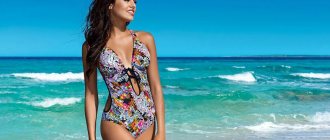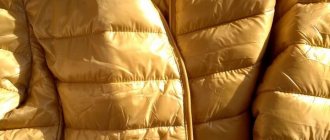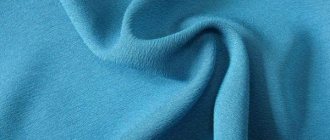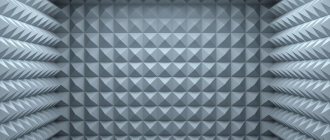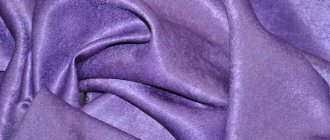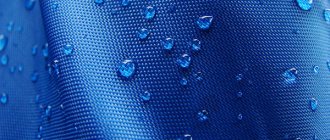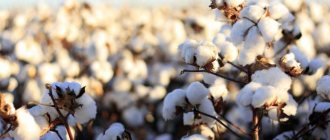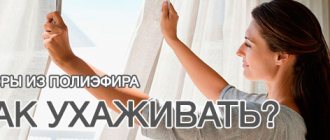History of appearance
Another name for taffeta fabric is special polyester silk. This name comes from the Persian concept of “taffeta,” which previously meant the finest silk fabric. The question of what is taffeta fabric is easy to answer; this fabric is budget-friendly and is used as an inner lining for clothes or bags. But real silk is too valuable and not suitable for such use. It turns out that taffeta is actually one of the types of synthetics that is universal and widely used for sewing products.
Type of matter
Care and storage
The basic principle of storing products made from polyester silk is that you should not put them in a closet wet or compressed, but must first straighten and dry them. It is best to find a ventilated room without foreign odors for storing things: the material absorbs them. If you are cleaning an item for a long time, you should make sure that it is clean: fresh dirt is much easier to remove. Storage temperature for taffeta products is room temperature.
Things usually have labels on them with instructions that you should read. But there are general rules for cleaning products made from polyester silk:
- Do not put away dirty things without washing them first;
- water temperature – less than 30 degrees;
- It is better not to machine wash;
- cannot be bleached;
- laundry detergents - special or regular shampoo, soap, but not powder;
- Do not dry clean;
- Gentle manual spinning is recommended.
The fabric does not require special care, but you definitely need to know about some things that should not be allowed under any circumstances. Any of these actions can permanently damage the product.
- Do not iron taffeta with a hot (over 110 degrees) iron.
- Products made from this material should not be dried in a machine.
- The use of bleach is prohibited.
- Dry cleaning is not recommended.
So, the fabric with a beautiful Persian name is universal and is used to make a wide variety of products, from tents to home curtains. Caring for products made from this material is not difficult, but it is not recommended to break some rules. The most significant advantages of the fabric include frost resistance, lightness and low price.
Unique material properties
The common quality for almost any type of this synthetic textile is lightness, thinness and glossy flatness. In this case, the fabric is distinguished according to the composition of the fibers, the material for which is:
- Polyester;
- Nylon.
Polyester
The parameters of polyester and nylon have almost the same description with minor differences.
Nylon material has quite enviable resistance to water and resistance to chemicals, practically does not deteriorate when washed and worn for a long time, and is elastic to a certain extent.
Nylon
However, nylon still has disadvantages. For example, nylon is easily electrified and almost does not allow air to pass through, which can harm a person. At the same time, nylon has a special coating and therefore this type of fabric is convenient to use for the manufacture of raincoats, jackets, awnings, tents and, in some cases, equipment for tourists. Sometimes such fabric is used as lining material for bags and backpacks or clothing.
You might be interested in what PAN means in a fabric: combination with wool and material properties
Product made of material
Polyester is much inferior to nylon in 2 main parameters: reliability and resistance to chemicals. But at the same time, polyester fibers by their nature are highly resistant to temperatures and electromagnetic waves of ultraviolet radiation. As a result, any type has its pros and cons. And the choice remains with the person who decided to purchase several meters of matter for his own purposes.
Material Density
Density has a noticeable effect on the quality of the fabric. It is determined by the number of warp and weft threads per square inch of the plane, and this T value should be reflected in the description of the fabric. The density of this fabric varies from 160T to 240T. And the weight of this raw material does not depend at all on the density, but on the presence and method of impregnation. For lightweight fabrics intended for use as lining, the density is generally not indicated. Taffeta lining fabric can be translucent, mesh, and in some cases has a knitted base.
Fabric lining
Types of taffeta
Taffeta material differs in composition and weaving method.
Nylon taffeta is very durable, does not allow or absorb moisture, is wear-resistant and elastic when it contains spandex (lycra, elastane). It does not blow in the wind, does not wrinkle, but is not pleasant to the body and can accumulate static electricity (if not treated with an antistatic agent).
Polyester taffeta looks more attractive and is pleasant to the touch, but in terms of strength it is much inferior to nylon. The fabric does not wrinkle, stretches well (if it contains elastic fibers), is resistant to abrasion, ultraviolet radiation, and has a water-repellent property.
Jacquard fabric is woven using additional, especially strong fibers that strengthen the material. Rip-stop taffeta is available on sale; it is used as a lining when sewing outerwear. Jacquard because it has a characteristic embossed pattern on the surface.
Technical characteristics: impregnation options
For fabrics with high density, special impregnations are mainly used:
- PVC - Poly Vinyl Chloride - is a special impregnation, the inner layer of which is equipped with absolute waterproofness, resistance to chemicals, and protection from elevated temperatures.
- PU milky is a type of pure white polyurethane interior coating;
- PU - colorless or transparent polyurethane, creates a layer that is resistant to water, in many cases applied from the inside out;
- Silver - a silver-colored coating that can protect from water elements and ultraviolet rays, in addition, it can hold a significant amount of fluff;
Use Cases
Advantages of synthetic material
Buyers have an ambiguous attitude towards synthetics. But taffeta attracts with numerous advantages:
- The maximum tensile load indicates the strength of the material. It cannot be accidentally torn or punctured. There are no puffs on it.
- Not afraid of temperature changes, suitable for regions with harsh climates. After all, some species can withstand temperatures up to – 160 degrees.
- Lightweight, light weight. Outerwear made of this fabric does not put pressure on the shoulders and does not restrict movement.
- Does not deform, does not sag or stretch. Retains its shape even with everyday wear and after frequent machine washes.
- Provides good ventilation without being blown by the wind.
- Nylon varieties do not absorb moisture. Polyester - absorbs moisture, but remains dry.
- It lends itself well to coloring, maintaining the brightness of the shades for a long time.
- Does not require complex care. Dirt is easily washed off and the fabric dries quickly.
- Affordable. Taffeta of various types is freely available for sale.
The impregnated material becomes heavier, loses its lightness, but gains improved quality characteristics.
Ways to use taffeta fabric
The use of this type of material is universal, but depends on the strength, density and certain properties of the impregnation.
- Polyester, especially thin, is very inexpensive, and is often used as a disposable decorative material for a variety of decorations, ephemeral draperies, packaging, garlands and flags. Thin polyester and nylon are used for a variety of linings. One could argue that taffeta lining is a really useful material for hiding the back edge.
- High density fabric is used to make autumn jackets, long coats, winter jackets, fitness suits and women's trousers. The range of this material, colors and patterns on the outer surface vary greatly. The use of decorative coatings and varnish effect makes it possible to create budget-friendly, affordable and practical clothing. In addition, clothing made from high-density raw materials is quite impressive, and stores have a wide selection of jackets and suits made from special raw materials.
You might be interested in this Description and features of universal microfiber cloths
Jacket
- Dense and reliable taffeta with special impregnations is used for the manufacture of a number of products: suits, awnings, special clothing, tents and tourist clothing. Further, demi-season and winter shoes, backpacks, umbrellas, and bags are produced from this type of material.
Cloth suit
Important! You need to be more careful when purchasing a product and evaluate the reliability and water resistance of the product. Especially if there are many requirements for the production of this type of product.
Use of material
The fabric is used in various areas of the textile industry:
- thin polytaffeta serves as the basis for the production of linings. Due to its low price, it becomes a raw material for the manufacture of decorative ornaments, garlands, and pennants;
- densely woven fabric is used for sewing jackets, trousers, and tracksuits;
- thickened material with the addition of special impregnations is intended for sewing protective suits, workwear, tourist tents, and awnings. Available for sewing demi-season clothing and related accessories (umbrellas, shoes, bags, backpacks).
Important! If you need to purchase items with a specific list of requirements, be sure to look at the ingredients on the label.
What are the characteristics of taffeta fabric?
The properties of this fabric differ and depend primarily on the material used in the manufacture of goods: polyester or nylon. Airiness, lightness and a bit of shine are the same for both types of taffeta. They do not shrink in size when in contact with water and dry in a short time. Nylon can be worn for a very long time. The material is reliable, resistant to water and stretches easily.
Awning
Note! The taffeta is coated on the front side with a special layer of silver to protect the fabric from the harm of ultraviolet radiation and exposure to water.
When you want to purchase clothes or shoes made from a special material or pieces of this material, you need to carefully study the label for sewing. Usually the type of coating and the degree of density of the fabric are given there, because this significantly changes the quality of the fabric and the scope of use of the product. This special fabric is used in a wide variety of clothing, hiking backpacks, heavy-weather shoes, and even several types of tents.
History and description
Taffeta fabric - what is it? It is quite possible to get an idea about the material, knowing that it got its name thanks to taffeta - a glossy silk fabric. These two materials are united by a smooth surface and glossy shine, but apart from the similarity in description and appearance, there is nothing in common between taffeta fabric and taffeta. You can verify this by reading a detailed article on our website, which contains a detailed description of taffeta. In general, the material can be described as follows: smooth, light, slightly elastic material with a glossy sheen. It can be of absolutely any shade, but, as a rule, without a pattern.
Matter can be of different densities. This is measured by the number of warp and weft threads on one square inch of surface area. The unit of measurement for material density is T (Tex). In our case, the values can vary from 190 t to 230 t. Taffeta 190 t is the thinnest. This taffeta is usually used as lining fabric. The most durable material is marked “Rip Stop”, which means that additional high-strength fibers were used in production.
Price for 1 meter – from 95 rubles.
You can see what taffeta fabric looks like in the photo.
Where is taffeta used?
Lightweight fabric without impregnation is in most cases used as a lining. The taffeta material is light, thin, drapes perfectly, and there are practically no hard seams. At the same time, it does not collect static electricity. There is a quality of removal of moisture that is released by the physical body, and a favorable microclimate is formed. This type of fabric does not cause allergies.
This type of fabric is easy to apply fashionable prints that remain for a long time. Light taffeta is used to hide the underside, while thick taffeta is used to give shape to clothes or shoes. Lining and thick fabric are equally important. After all, jackets and raincoats made of dense material are resistant to wind and water. And when there is insulation in the form of down and synthetic padding, the material easily retains heat.
You might be interested in what fabrics are sportswear and suits made from?
This fabric is used to make autumn jackets, down jackets, warm trousers and even overalls, boots and sneakers, waterproof backpacks, special suits and many other things. In addition, even posters, awnings, sleeping bags, streamers and banners are made from this type of raw material.
What kind of suits are made from taffeta?
- fishing;
- skiing;
- hunting;
- sports;
- overalls.
Note! The taffeta is coated on the front side with a special layer of silver to protect the fabric from the harm of ultraviolet radiation and exposure to water.
Application
Depending on the raw materials used and the presence of impregnation, this type of material is used in many areas.
Cloth
Read about: micro-oil - flowing and dense fabric with excellent characteristics
Thin material without impregnation is most often used as a lining. It is very thin, light, drapes well, does not form rigid seams, and does not accumulate static electricity. It has the ability to remove moisture released by the body and creates an excellent microclimate. Is hypoallergenic. The pattern (print) fits well on such fabrics and does not fade. Thin taffeta is used as a lining to hide the underside, and denser taffeta is used to give the product shape. Depending on the new properties that taffeta acquires thanks to one of the types of impregnation used, it is used for sewing outerwear and sportswear, as well as accessories. Jackets and windbreakers made of dense Shine taffeta material do not allow wind and moisture to pass through, and when using insulation (sintepon or down), they retain heat perfectly. Overalls, down jackets, trousers with taffeta insulation are indispensable things for living and relaxing in areas with low temperatures.
Taffeta impregnated with camouflage colors are often used for fishing and hunting suits. Its surface can be smooth or textured. Textured fabrics make beautiful winter clothes for children and adults.
Beautiful and practical ski suits are made from taffeta reinforced with a membrane. It's called Dobby Ponge.
Sport equipment
Due to its moisture resistance and UV protection, this material is often used for the manufacture of sports and tourist tents. They perfectly protect from rain and snow, tents made of silver taffeta reflect the sun's rays well, preventing the air inside from heating up, and the poly taffeta fabric, due to additional polyurethane treatment, provides unique waterproofness.
It is also used for the production of awnings, umbrellas, sleeping bags, protective covers and bags.
Promotional Products
Lining taffeta is used for the production of banners, banners, flags, and posters with company logos. They are durable, bright and inexpensive.
Curtains
Lining taffeta makes bright, airy curtains that drape beautifully and can give the interior a unique look.
They are easy to care for, wash well, dry quickly and do not require ironing. If necessary, you can use an iron at low temperature.
How to properly care
How to properly care for taffeta? This synthetic fabric is unpretentious and the material is actually easy to care for:
- Any type of this material, with a special coating or not, tolerates many washes in a washing machine at a temperature of 45 degrees.
- But it’s better not to dry it in a machine. This fabric dries quite quickly and it is better not to use an iron, but if necessary, the fabric can be ironed at temperatures up to 100 degrees.
- It is best to avoid dry cleaning and not allow chlorine to come into contact with the fabric.
On a note! The price range of the fabric is really diverse and 1 meter of fabric can be bought from 25 rubles and more, depending on the density of the material and also the influence of several characteristics. Overalls made from a special material cost on average 1,500 rubles, and if the quality is better, then from 2,000 rubles and more.
What kind of fabric
Taffeta fabric or polyester silk is a thin synthetic fabric. Often special protective impregnations are applied to it. They make the material waterproof or resistant to high temperatures or dirt.
The description of taffeta allows you to better understand what kind of fabric it is: light, silky sheen, tear-resistant. It is produced using a plain weave. The material comes in different densities depending on its purpose. Thus, the most durable type of ripstop taffeta is obtained with the addition of reinforcing threads.
Due to its strength, low elasticity, and low price per meter, the fabric has found wide application in tailoring and the production of travel equipment.
Advantages and disadvantages
This polyester material is more abrasion resistant than nylon and is more resistant to ultraviolet radiation and elevated temperatures. The main disadvantages of this type of product are increased electrification, low conductivity of air and water vapor. When special impregnation is used, the material loses its lightness, but at the same time acquires important qualities:
- a colorless polyurethane coating (called PU) is applied on the inside to make it resistant to water;
- white polyurethane (PUmilky) is used to compensate for the internal flatness, in order to make the material resistant to water and colored, in addition to making the color more saturated.
Whether it is worth purchasing taffeta and using it for your own purposes is a matter and choice of each person individually. The main thing is to understand what really matters when choosing fabric. And one undeniable fact about canvas is that the fabric is useful and protects from rain. It also keeps you warm in winter, keeping the warmth inside the down jacket.
Composition, varieties and properties
The raw material for the production of Cordura is 100% nylon produced by. In some cases, the fabric may contain up to 10% cotton. The presence of this component is indicated by a light comb on the surface of the fabric.
The threads can be of different thicknesses, they are folded several times and twisted, as a result of which they become strong and thick. The unusual type of weave gives the material particular resistance to abrasion. At the same time, Cordura excellently retains protective impregnations, while simultaneously maintaining the possibility of gas exchange with the environment. Fabric characteristics:
- fiber density ranges from 100 to 1000 denier;
- the material begins to melt at a temperature of 210 ° C;
- high resistance of waterproof and polyurethane coatings (applied in several stages);
- increased wear resistance;
- ability for gas exchange (1 m2 of material passes at least 0.5 kg of water vapor in 24 hours);
- increased water resistance (more than 5 thousand mm of water column).
In order to give Cordura new properties during the production process, other fibers are added to nylon, so there are many varieties of this fabric:
- Cordura 1000—140—T440 has a density of 1000 denier and serves as the standard for strength and wear resistance for other types;
- Cordura Plus 500-140-T440 - 500 denier, lighter than standard;
- Cordura Plus 330—122—T440—used in the production of mixed materials;
- Cordura Plus/Supplex - quick-drying, breathable;
- Cordura Plus/Lycra - stretches;
- Cordura Plus ColorLock - has increased resistance to ultraviolet radiation;
- Cordura Plus/Taslan - with insulation, protects from wind, water and cold;
- Cordura Plus Natural - contains a lot of cotton fibers, but is many times stronger than regular cotton fabrics.
Fabrics marked 500D, 1000D (for example, Cordura 600D) include threads of the appropriate thickness. That is, the higher the number, the denser, thicker, stronger and heavier the fabric will be. All varieties of Cordura have common properties:
- High resistance to punctures, abrasion and tearing.
- Softness.
- Increased electrical insulating properties.
- Flexibility.
- Waterproof.
- Wind protection.
- Excellent colorability.
- Ability to withstand high temperatures (up to +85° C).
Types of fabric, their properties and areas of application
- Nylon. This is a durable polyamide material that has a long service life, does not wrinkle or deform. Nylon fabric is abrasion resistant, but it tends to accumulate static electricity. In addition, the material does not absorb moisture well and is not very pleasant to the touch. Most often it is used as a lining or used to create banners, flags, and posters. If nylon fabric has a protective impregnation, then tourist tents and equipment, covers, and awnings are made from it.
- Polyester. This type of fabric is made from polyester fiber. Polyester fabric is no less durable than nylon fabric. However, this material is inferior to the nylon variety in strength. The advantages of polyester taffeta include visual appeal, resistance to ultraviolet radiation and changes in ambient temperature. Polyester material is used for sewing tracksuits, overalls, and trousers. Taffeta with a protective layer is used for the manufacture of jackets, down jackets, ski suits, and workwear for chemical industry workers.
An important characteristic of the material is density, which is expressed in units of tex (T). This marking indicates the total number of warp and weft threads per square inch of fabric. The density value can vary from 170 to 230 T.
There are varieties of taffeta that do not have a density marking. This fabric is called lining. This is a thin mesh or knitted material from which the lining of clothing is made.
Some types of material have a protective coating. Fabric treated with a special compound provides better protection from wind and cold, but has a higher specific gravity and a low degree of breathability. The type of coating is also indicated by special markings:
- pu is a polyurethane layer that is applied to the front or back of the fabric and gives it high water-repellent ability;
- pu milky - a white polyurethane composition that enhances the light resistance of the material, applied from the inside out;
- pvc – protection made of polyvinyl chloride, which allows you to create fabrics with a high degree of protection from aggressive chemicals, high temperatures and moisture;
- silver is a silver polymer composition that is applied to the front surface of the fabric and is used to enhance the waterproof properties of clothing filled with down and reflects the sun's rays.
Pros and cons of taffeta as a lining fabric
The characteristics of taffeta as a lining material are determined by its composition. However, there are a number of positive and negative qualities inherent in all types of fabric. The advantages include the following properties:
- high degree of strength and wear resistance;
- the ability to maintain an attractive appearance after repeated washing in automatic and manual modes;
- long service life;
- providing wind protection while maintaining breathability;
- the ability to remain dry and absorb human body secretions;
- resistance to deformation;
- protection from cold even at extremely low temperatures;
- light weight of products;
- rapid evaporation of moisture from the surface of the fabric;
- hypoallergenic;
- low cost.
Taffeta has more advantages than disadvantages, but it still has some disadvantages. The negative qualities of the fabric include:
- accumulation of static electricity;
- lack of external attractiveness and pleasant sensations when in contact with the body.
Characteristics
Taffeta is an inexpensive synthetic material with simple thread weaving. It comes plain-dyed in different colors, as well as with all kinds of printed patterns. “Camouflage” and jacquard patterns are in particular demand. The fabric consists of pure polyester or nylon with a protective coating. Another name for taffeta is polyester silk. It has found wide application in everyday life - it is used as a lining in specialized and sports clothing, as well as in the manufacture of tourist equipment.
In addition to tents, awnings and sleeping bags, taffeta is used to make curtains and bedspreads, chair covers and pillowcases for decorative pillows. The low cost, as well as the significant wear resistance of polyester silk, allows it to be used everywhere and even in outdoor advertising, for example, in banners, streamers, and flags. In addition, this fabric produces a fairly clear and durable print quality.
Taffeta is produced in two types. Its quality characteristics are affected by the composition of the fibers. Nylon. This composition gives the fabric strength, and when adding spandex, also elasticity. This fabric stretches well and practically does not wrinkle, does not blow in the wind and dries quickly after getting wet. The nylon version has high water-repellent properties and wear resistance. This fabric will withstand even mechanical damage.
Description of disadvantages:
- the tendency to accumulate static electricity, provided that the material is not treated with special antistatic agents;
- poor hygroscopicity;
- unsuitable for body wear;
- simple look.
Polyester. It comes without impurities or with the addition of elastane. This is a durable and wrinkle-resistant material. Visually more beautiful than nylon and tactilely more pleasant to the touch. The material is resistant to friction, ultraviolet radiation and different temperatures. Polyester taffeta does not fade during long-term use, but is less durable.
This is interesting: Fabrics for workwear: types, description and features
Properties
The characteristics of taffeta vary depending on the raw material used in production: nylon or polyester. Common to both types of fabric are lightness, airiness and slight shine. They do not deform when wet and dry very quickly.
- Nylon taffeta is very wear-resistant, durable, water-resistant and elastic. Disadvantages include electrification and low hygroscopicity.
- Polyester taffeta is more resistant to abrasion than nylon and is more resistant to sunlight and high temperatures.
When using special impregnation, the canvas loses its lightness, but acquires new positive characteristics:
- a transparent polyurethane coating (designation PU) is applied on the reverse side to provide water resistance;
- white polyurethane (PU milky) is used to cover the back surface in order to make the taffeta moisture-resistant and opaque, as well as to enhance the color;
- to protect the canvas from exposure to ultraviolet radiation and moisture, its front surface is covered with a special silver layer (Silver);
- For special protection from high temperatures, moisture and chemicals, taffeta is covered with a layer of PVC.
In many ways, the properties of this type of fabric depend on density. It is designated by a quantitative indicator and the letter T (tex - from “Texture Element”), which shows the number of warp and weft threads per square inch. It comes in densities from 170T to 230T (tex).
To increase the strength characteristics (resistance to longitudinal tearing), special reinforced threads are added in the form of a mesh; this type of material is called RipStop .
It is important
When purchasing taffeta products or pieces of fabric for sewing, you must carefully study the label, which indicates the density and type (presence) of coating, since the properties and scope of the material largely depend on this.
Rules of care
Be sure to study the recommendations from the manufacturer indicated on the product label. But there are also general rules that will extend the life of the fabric:
- taffeta can be washed in an automatic machine, but the temperature should not exceed +40 degrees;
- It is better to choose soap or shampoo as detergents. Powders and bleaches can harm synthetic fabric;
- manual spin is recommended;
- Machine drying should be avoided. The material dries quickly under natural conditions, but the room must be well ventilated, since the fabric easily absorbs odors;
- Dry cleaning is not allowed;
- Taffeta items do not wrinkle, so there is no need to iron them. If such a need arises, monitor the temperature of the iron soleplate. It should not be higher than +110 degrees.
Undoubtedly, synthetic fabrics cannot replace natural analogues. But it was not without reason that the multifunctional taffeta received the sympathy of buyers. It is comfortable to wear and easy to care for, protects from wind, precipitation and retains heat well. This is an excellent example of high quality synthetics.
